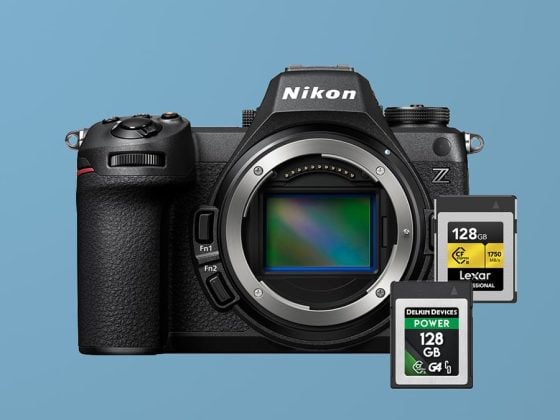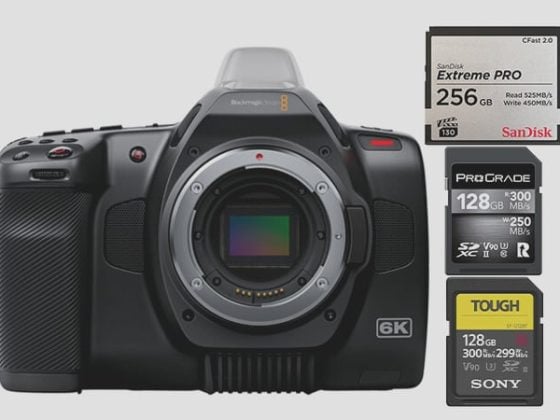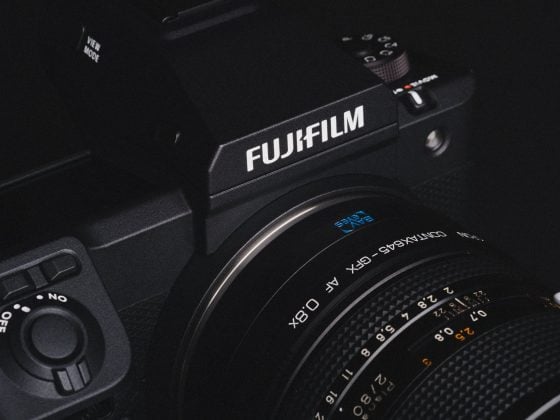The Fujifilm X-E2s is like the X100T’s cousin that can take different lenses. The camera performs a lot like the X100T but does feature some lighter hardware which doesn’t quite allow it to max out memory card speeds. Because of this, there is some disparity between memory card speeds.
This guide will help you find the fastest and the best memory card for the Fujifilm X-E2s.
Best SD Memory Cards For The Fujifilm XE2s
The Fujifilm X-E2s seemed to really like some brands of cards while not performing well with others. I’m not sure why this is but you can use the chart below to help you find the fastest SD memory card for the Fujifilm XE2s.
Take a look
Fujifilm X-E2s Memory Card Speed Chart
| SD Memory Cards | USB 3.0 Read | USB 3.0 Write | Fujifilm X-E2s Write Speeds | See Price |
| UHS-II | ||||
| Lexar 64GB 2000x UHS-II | 272.7 MB/s | 244.5 MB/s | 48.63 MB/s | Amazon |
| Toshiba 64GB UHS-II | 258.8 MB/s | 226.5 MB/s | 47.62 MB/s | Amazon |
| Sony 64GB UHS-II | — | — | 46.18 MB/s | Amazon |
| Transcend 64GB UHS-II | 290.2 MB/s | 182.1 MB/s | 44.53 MB/s | Amazon |
| Delkin 32GB UHS-II | 253.5 MB/s | 219.6 MB/s | 43.44 MB/s | Amazon |
| Lexar 64GB 1000x UHS-II | 147.4 MB/s | 78.4 MB/s | 42.63 MB/s | Amazon |
| Sandisk Extreme Pro 64GB UHS-II | 260.5 MB/s | 214.8 MB/s | 28.56 MB/s | Amazon |
| UHS-I | ||||
| Samsung Pro+ 64GB U3 | 97.5 MB/s | 87.3 MB/s | 46.47 MB/s | Amazon |
| Samsung Pro 64GB U3 | 97.7 MB/s | 78.6 MB/s | 45.85 MB/s | Amazon |
| Samsung Pro 64GB U1 | 96.3 MB/s | 82.2 MB/s | 45.13 MB/s | Amazon |
| Kingston 64GB U3 | 98.1 MB/s | 90.4 MB/s | 40.98 MB/s | Amazon |
| Transcend 64GB U3 | 96.7 MB/s | 68.4 MB/s | 40.63 MB/s | Amazon |
| Lexar 600x 64GB U1 | 95.4 MB/s | 64.8 MB/s | 40.23 MB/s | Amazon |
| Lexar 633x 64GB U3 | 93.3 MB/s | 67.3 MB/s | 39.64 MB/s | Amazon |
| Sony 64GB U3 | 96.5 MB/s | 84.5 MB/s | 38.57 MB/s | Amazon |
| PNY 64GB U3 | 96.5 MB/s | 66.1 MB/s | 38.45 MB/s | Amazon |
| Sandisk Extreme Pro 64GB U3 | 98.6 MB/s | 90.8 MB/s | 29.91 MB/s | Amazon |
| Sandisk Extreme Plus 64GB U3 | 99.0 MB/s | 64.4 MB/s | 29.79 MB/s | Amazon |
| Sandisk Extreme 64GB U3 | 72.43 MB/s | 54.1 MB/s | 29.51 MB/s | Amazon |
| PNY 64GB U1 | 96.5 MB/s | 66.5 MB/s | 29.03 MB/s | Amazon |
| Samsung 64GB U1 EVO | 47.7 MB/s | 27.3 MB/s | 20.59 MB/s | Amazon |
Fujifilm X-E2s Memory Card Speed Test Overview
You can see right away the difference in speed between card brands. It seems the XE2s really like Samsung cards while performance with the Sandisk cards suffered across the board. This is the first camera I’ve tested where Sandisk cards were not on the top of the charts.
Fastest UHS-II Memory Cards For The Fujifilm X-E2s
The Fujifilm XE2s doesn’t take advantage of UHS-II memory cards but they still do function and it does seem to really like the Lexar 2000x and it performed the best out of any card with a write speed of 48.63 MB/s.
The main advantage of using UHS-II will be USB 3.0 write speeds to your computer, assuming you have a fast hard drive.
Lexar 64GB 2000x UHS-II – Amazon
Toshiba 64GB UHS-II – Amazon
Fastest UHS-I Memory Cards For The Fujifilm X-E2s
UHS-I memory cards offer the best bang for the buck and they perform really well in this camera with a top speed of 46.47MB/s on the Samsung Pro+ U3.
Samsung Pro+ 64GB U3 – Amazon
Samsung Pro 64GB U3 – Amazon
My Personal Recommendation For The Fujifilm X-E2s
Although Sandisk is one of the best brands out there, they did not perform well with the XE2s for some reason. In this case, it’s really hard to beat the performance of the Samsung cards. They are also really nice cards as well and I’ve never had any issues with them.
Samsung Pro+ 64GB U3 – Amazon
Fastest Memory Cards Are Not Always The Best
Currently, there are several different types of flash memory on the market. Some read and write faster, while some read and write slower but are rated with more life cycles. And then there are some that are fast with a high cycle count.
What does this mean?
Flash memory is rated typically from 5,000 cycles with old cards to 30,000+ cycles with new cards. Some types of flash memory can even last up to 100,000 cycles. This number of course is always going up as technology improves, but it plays an important role in choosing the best memory card for your needs, especially if you take a lot of photos.
It also means you should probably retire your old cards to prevent corrupting any files on an important shoot.
I personally take about 20,000 photos a year. So if I had an old memory card that was rated for only 5,000 cycles, it could start to run into issues with corrupted shots and it happens sometimes when I’m doing these memory card speed tests even with new cards. This is why some memory cards only have a 1-year warranty. They’ll be good for high-intensity use for about 30,000 shots.
Unfortunately, card manufacturers usually don’t tell you what kind of flash memory they are using and many now offer limited lifetime warranties, so you’re stuck not really knowing how long your card can really last.
This is why I still just recommend buying the fastest memory card at a price you’re comfortable with. Especially if you consider how much memory cards come down in price every year.
UHS-II Memory Cards, Will They Work For The Fujifilm X-E2s?
The short answer is yes they will work in the Fuji X-E2s, but with limited speeds. However, if you’re a casual shooter, they probably won’t be worth the higher price.
Right now UHS-II SD memory cards are the fastest you can buy, but few cameras can take advantage of them. However, if you like to buy large cards and find yourself filling them up a lot, then those UHS-II speeds can really benefit you when it comes to transferring the data to your computer. Really nice for studio photographers. But you’ll also need fast hard drives to take advantage of these speeds. Something like a Raid or an SSD should work fine.
Be sure if you do get UHS-II cards to also get a UHS-II capable memory card reader found here.
Best Memory Card For The Fujifilm X-E2s – The Bottom Line
If you want a card that’s blazing fast at USB 3.0 transfer speeds to your computer, then go with a UHS-II memory card. If you want the fastest card at the best price, stick with UHS-I. If you want a card that will last you for years, be sure to look at the warranty. A higher warranty usually means better lifetime flash cycles, which means more photos taken over the years without risk of corruption.
For Fujifilm cameras that don’t support UHS-II, I usually just stick with UHS-I cards, since they’re not very expensive and always coming down in price.
In the case of the XE2s, stay away from Sandisk and go with Samsung, Kingston, Transcend, or Lexar for UHS-I cards. And if you’re shooting with UHS-II, stick with the Lexar 2000x or the Toshiba.
Also, check the complete list of Fujifilm X-Mount lenses
| **This website contains affiliate links. We will earn a small commission on purchases made through these links. Some of the links used in these articles will direct you to Amazon. As an Amazon Associate, I earn from qualifying purchases. |





